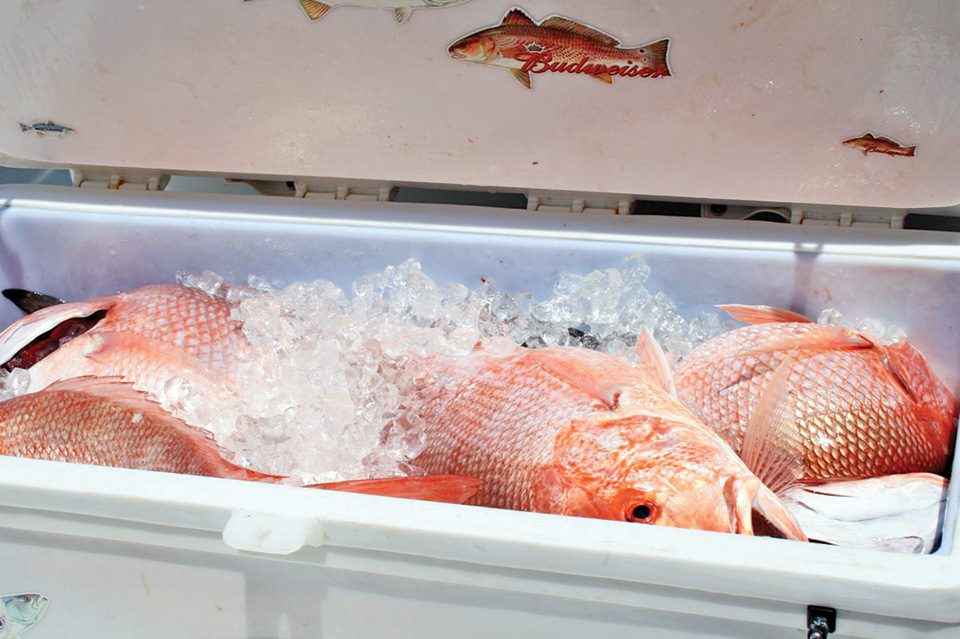How you handle your freshly caught fish can make all the difference when it comes time to pull it out of the freezer. By following a few simple steps, you can ensure your catch remains firm, flavorful and delicious.
- Whether it’s bound for the freezer or straight to the fryer, quickly cooling fish is the first step in preserving its quality. Kill the fish with a club or a quick slice of the knife as soon as you bring it onboard and then put it on ice immediately. Crushed ice works more quickly than cubed ice because it covers more surface area. If you can find it, saltwater ice is an excellent way to preserve fish. Make sure your ice is distributed evenly around your fish, and leave the drain plug open so your supper isn’t soaking in bloody slush.
- If you find a little free time on the boat when the bite slows down, it’s a good idea to go ahead and gut your fish and pack the cavity with ice. Refresh ice as needed.
- Once you clean your catch, it will keep well in the refrigerator for several days. Pat fillets dry with a paper towel, and then wrap them tightly in plastic wrap. For the best results, store them in a bowl of ice or put a bag of ice on top of them.
- Frozen fish retains its quality for months and up to a year depending on the type of fish and if it is stored properly. Lean fish like snapper, grouper or walleye does better in the freezer than fatty fish like tuna, salmon or trout. With any fish, the key is to avoid freezer burn, which means eliminating contact with air. If you catch and eat a lot of fish, it’s worth investing in a vacuum sealer to package fish before freezing. If you don’t have a vacuum sealer, use a freezer bag and push all the air you can out of the bag.
- Freezing fish in water is another option that completely eliminates air contact. Use saltwater for saltwater fish and freshwater for freshwater fish. Place fillets in a freezer bag, fill it with water, seal it up and freeze.
- Properly thawing your catch is also very important to the finished product. Think ahead and thaw it in the refrigerator overnight. If you’re short on time, place the sealed bag in a bowl of cold water. Water that is circulating thaws meat faster than still water, so leave the bowl in the sink and let cold water trickle into it continuously to speed up the process.
